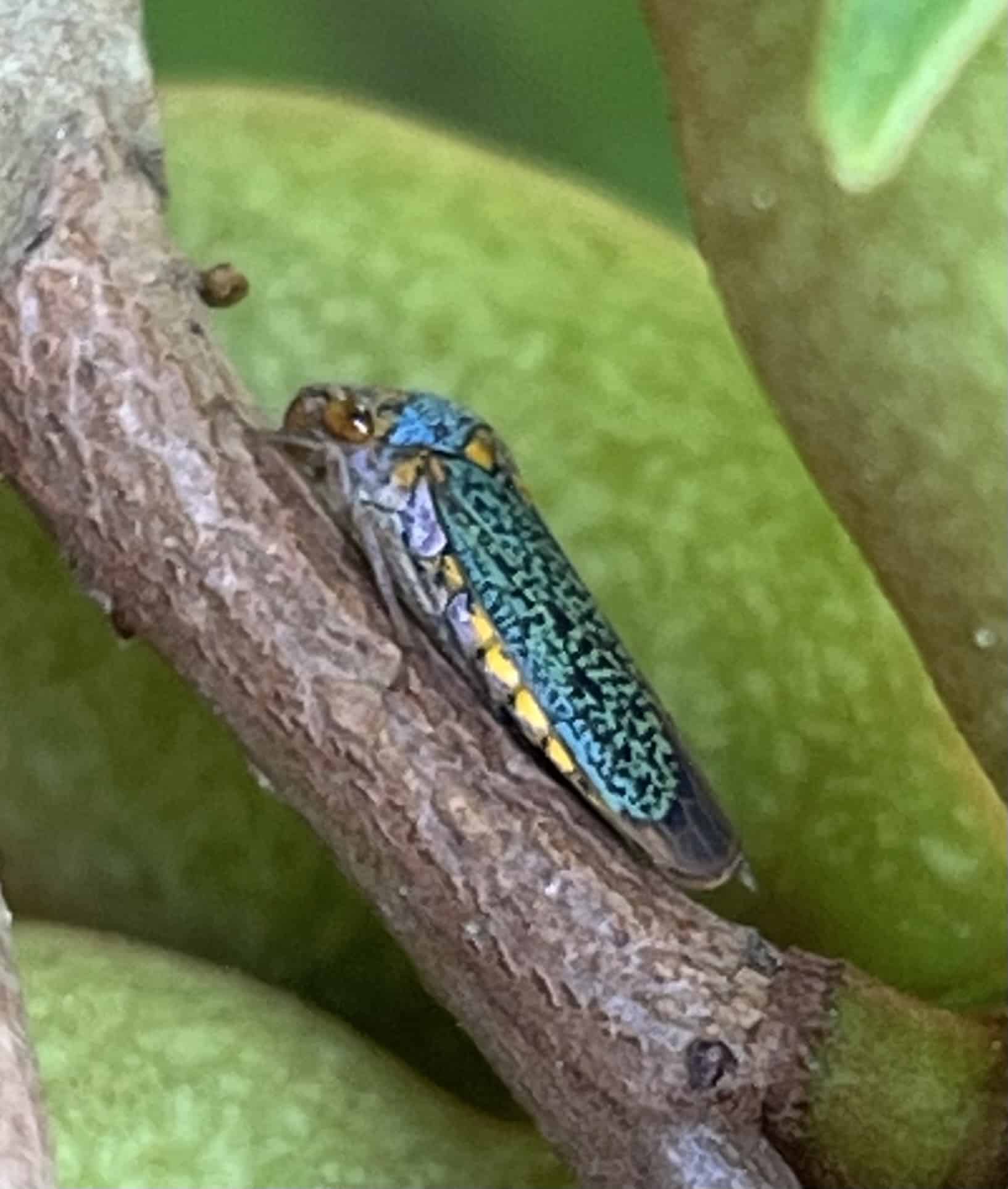The etymology, or history behind the names of plants and animals has always been of interest to me, especially when the name reflects something descriptive of the organism, making the name easy to recall. For a large group of leafhoppers, known as sharpshooters, the name has several explanations.
Leafhoppers belong to a very large group of insects in the order Hemiptera (“hemi” meaning partial, “ptera” meaning wing) – true bugs with their front wings having solid bases and membranous tips. The family to which sharpshooters belong has over 2,400 described species. Many of these are brightly colored like the Broad-Headed Sharpshooter I found feeding on a Dwarf Paw Paw plant in my yard.
As for the common name, researchers first used the term in 1893 to describe the small round feeding holes left by the insects when feeding on cotton. All true bugs have piercing-sucking mouthparts, designed to feed on the sap of plants. To these folks, these holes reminded them of bullet holes from sharpshooting riflemen.
The term has also been used to describe the hiding behavior of these insects when disturbed – rapidly moving to the opposite side of a stem, much like a sharpshooting human would do. My favorite explanation for their name, however, is all about how they feed.
As a young boy, my curiosity got the best of me when I noticed a multitude of small gooey droplets of “stuff” all over the hood of Mama’s car, parked under a Crape Myrtle tree in our yard. Parking a car in the shade helped greatly in the age before air conditioning in cars. As I examined them, I felt drops of liquid falling on my arm – from the tree.
This rapid movement of fluids results in rapid ejection of sappy fluids from their bodies, often associated with an upward flick of their abdomens to launch the droplets away, landing on anything below, including me and Mama’s car. If not removed, these spots soon turn moldy, making a fine mess. This behavior on one of my least favorite plants (Crape Myrtle) may also help explain the accumulation of black, moldy layers on the leaves of these plants in summer. Sharpshooter pee at work.
For piercing-sucking insects, this pressure means that fluids are forced into and out of their bodies at a high rate. It is analogous to trying to drink from a water hose on high. This rapid transport through the body also means that much of the sap remains in the ejecta that, in my case, landed on me and Mama’s car. If not removed, these spots soon turn moldy, making a fine mess.
But, aside from the stories about their common name, sharpshooters can be quite colorful insects hanging around your yard. Some can become pests on your plants, including the transmission of some plant diseases, but for the most part, they are less of a problem than other garden pests.
Look for sharpshooters in your yard but beware of their aim!
Hope to see you in our great outdoors!




